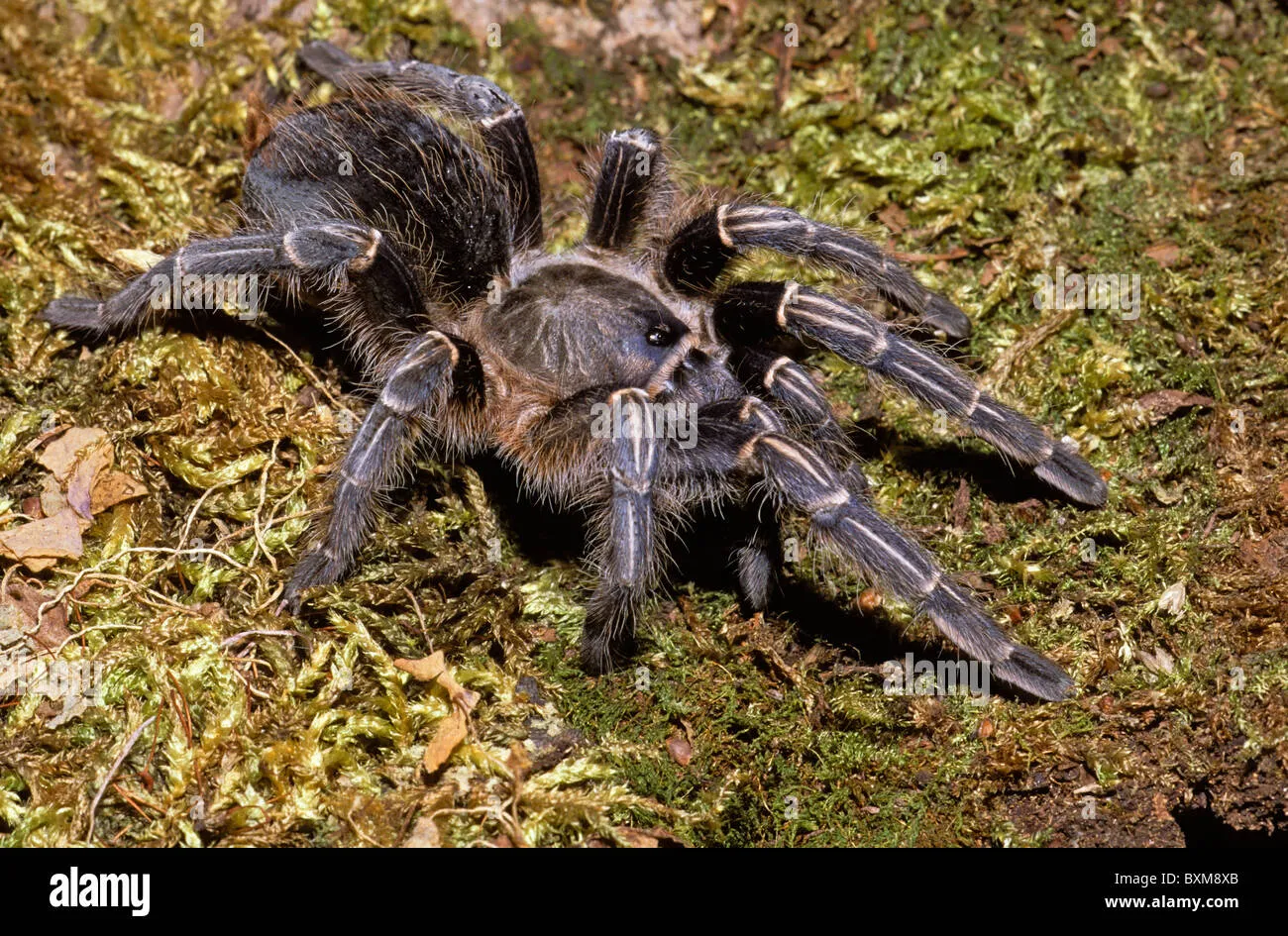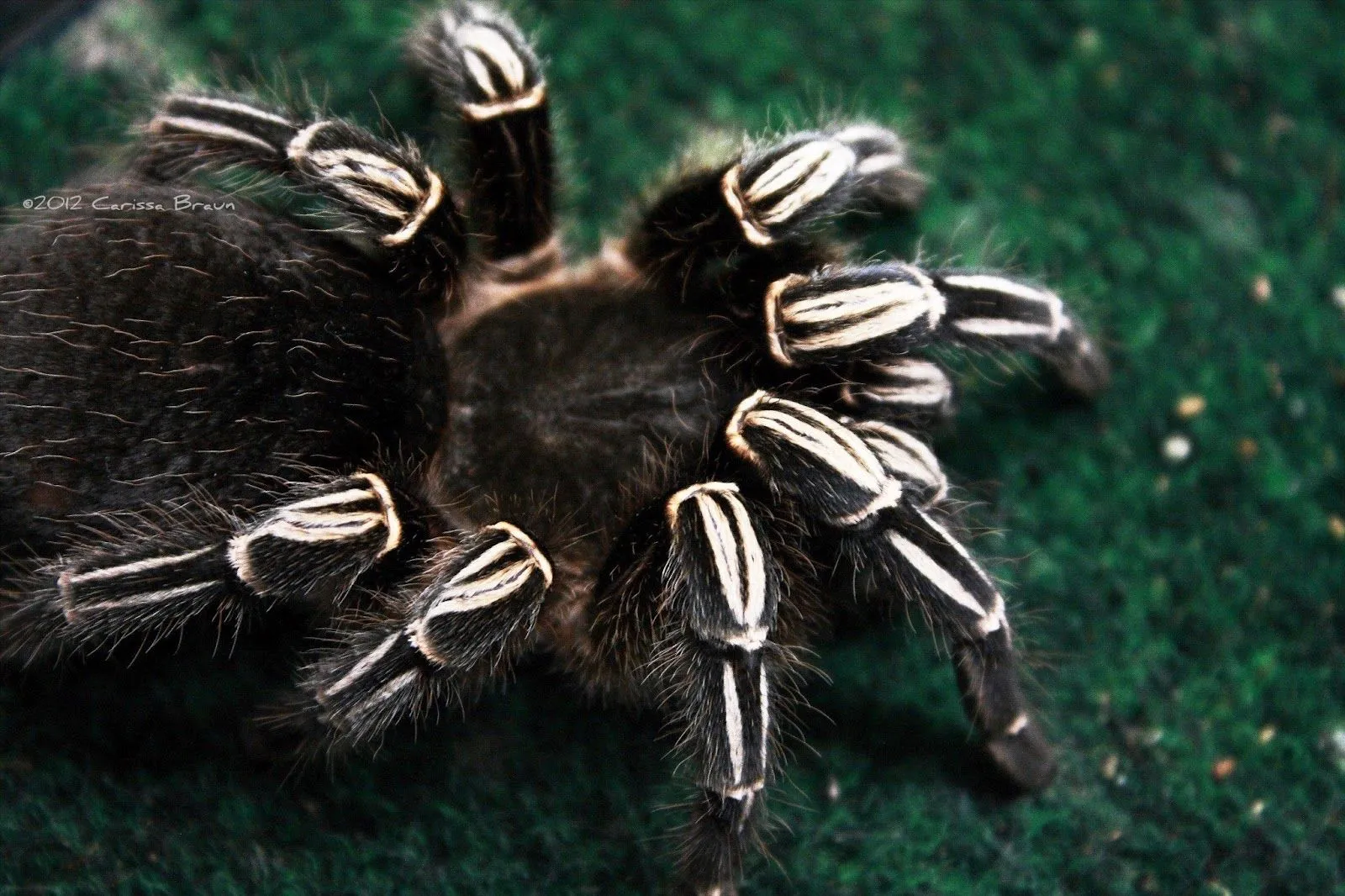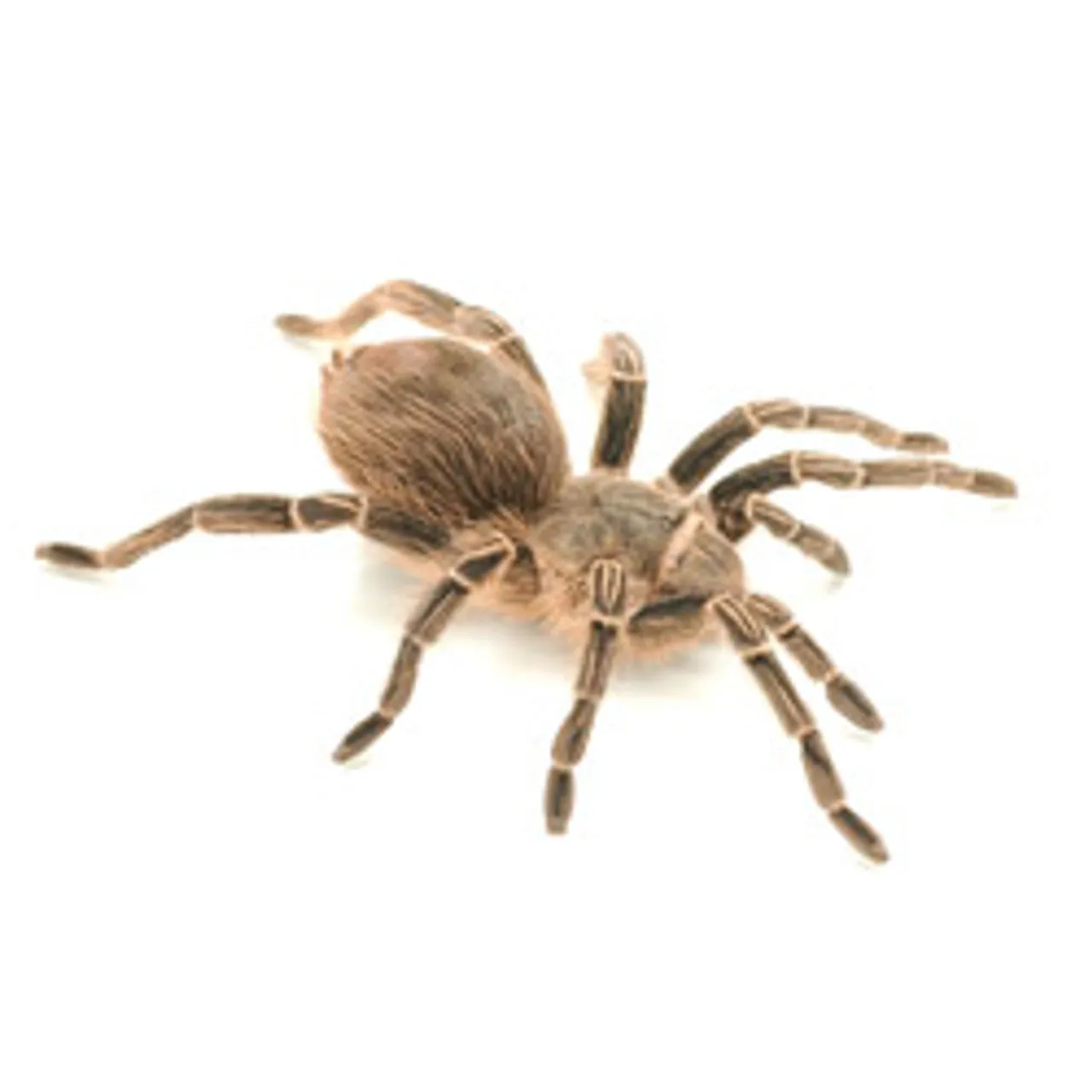What is a Zebra Tarantula?
The Zebra Tarantula (Aphonopelma seemanni), named for the striking black and white stripes on its legs, is a captivating species of tarantula native to Central America. These spiders are popular among arachnid enthusiasts due to their relatively docile temperament and manageable size. This guide unveils five amazing facts about these fascinating creatures, offering insights into their appearance, habitat, behavior, and conservation, providing a comprehensive understanding of the Zebra Tarantula’s unique place in the world of invertebrates. From the jungles of Costa Rica to the homes of dedicated keepers, the Zebra Tarantula continues to intrigue and fascinate those who encounter it. Its distinctive markings, coupled with its interesting life cycle, make it a noteworthy subject for both casual observers and seasoned experts.
Appearance and Identification
The Zebra Tarantula is easily identifiable by its striking appearance, making it a favorite among tarantula keepers. The contrasting black and white stripes on its legs are the most notable feature, resembling the pattern of a zebra. These spiders have a relatively compact body compared to some other tarantula species. The carapace, the upper part of the cephalothorax, is typically dark, often a shade of brown or black, providing a stark contrast to the striped legs. Their overall appearance is robust and well-suited for their lifestyle in burrows and terrestrial environments. The combination of these features makes them instantly recognizable and a visual delight.
Distinctive Striped Pattern

The most defining characteristic of the Zebra Tarantula is its striking striped pattern. This pattern consists of alternating black and white bands that run along the legs. The intensity and clarity of the stripes can vary slightly between individual tarantulas, but the overall pattern is consistent. This bold pattern serves as a form of camouflage, allowing them to blend into their environment, particularly among the roots and foliage where they often reside. The unique and eye-catching stripes are a key reason for their popularity in the pet trade, drawing attention from enthusiasts who appreciate their aesthetic appeal.
Size and Physical Characteristics
Zebra Tarantulas are medium-sized tarantulas. Adult females typically have a leg span of about 5 to 6 inches, while males are generally smaller. Their bodies are covered in fine hairs, which give them a velvety texture. The chelicerae, or mouthparts, are strong and capable of delivering a bite if the tarantula feels threatened, though they are generally docile. Their bodies are sturdy and designed for burrowing and moving through their terrestrial habitat. The combination of their size, build, and distinctive markings contributes to their overall charm and makes them an appealing choice for tarantula keepers looking for a manageable yet visually stunning pet.
Habitat and Distribution
Zebra Tarantulas are native to Central America, specifically the countries of Costa Rica, Nicaragua, and Honduras. In these regions, they inhabit a variety of habitats, from tropical dry forests to more humid environments. These spiders are well-adapted to their environments, exhibiting behaviors and physical traits that allow them to thrive. Understanding their native habitat is crucial for providing the best care in captivity and appreciating their natural behaviors. Their adaptability is a key factor in their survival.
Where Zebra Tarantulas Live

Zebra Tarantulas are terrestrial spiders, which means they spend most of their time on the ground. They are burrowing spiders, constructing their homes in the soil. In the wild, they are often found in burrows under rocks, logs, or within the roots of trees. They create these burrows to provide shelter from the elements and predators. In captivity, keepers replicate these conditions by providing substrate deep enough for burrowing and offering hiding places. The burrowing behavior is a natural instinct for these spiders, and providing a suitable habitat enhances their well-being.
Natural Habitats
The natural habitats of Zebra Tarantulas are diverse, ranging from tropical dry forests to more humid environments. These habitats provide the necessary conditions for their survival, including suitable temperature, humidity, and food sources. They prefer warm, dry climates but can tolerate some variation. The availability of suitable soil for burrowing and the presence of prey, such as insects, are also essential factors. The understanding of their natural environment helps in creating appropriate terrariums for captive tarantulas, mimicking the conditions of their native habitats to promote their health and well-being. These environments are critical for their overall health and survival.
Diet and Feeding Habits
Zebra Tarantulas are primarily insectivores, feeding on a variety of insects in their natural habitat. Their diet consists mainly of crickets, grasshoppers, beetles, and other small invertebrates. In captivity, they are usually fed a diet of commercially available crickets and other feeder insects. Providing a varied diet ensures they receive the necessary nutrients. Their feeding habits and preferences are typical of many tarantula species. The success of keeping a Zebra Tarantula often depends on providing a consistent and nutritious diet.
What They Eat

The diet of a Zebra Tarantula in the wild mainly consists of various insects and small invertebrates. They are opportunistic hunters, capturing prey that comes within reach. In captivity, they typically feed on crickets, mealworms, and roaches. It’s important to feed them insects that are appropriately sized for the tarantula to prevent injury. Gut-loading feeder insects with nutritious foods before feeding them to the tarantula can enhance the nutritional value of their diet. Providing a balanced and varied diet is crucial for their overall health and well-being in captivity.
Feeding Frequency
The feeding frequency of Zebra Tarantulas varies depending on their age. Spiderlings and juvenile tarantulas may be fed more frequently, such as twice a week, while adult tarantulas can be fed less often, typically once a week or even less. Overfeeding can lead to health problems, so it is essential to monitor their feeding habits and adjust the frequency as needed. It is important to remove any uneaten prey from the enclosure to prevent them from stressing or harming the tarantula. Observing their behavior and body condition helps determine the appropriate feeding schedule.
Lifespan and Behavior
Zebra Tarantulas have a moderate lifespan compared to other tarantula species. Understanding their behavior and lifespan is key to providing proper care and appreciation for these fascinating creatures. They exhibit interesting behaviors both in their natural environment and in captivity, making them captivating pets. The combination of their moderate lifespan and intriguing behaviors contributes to their popularity among arachnid enthusiasts. Their behaviors reflect adaptations to their environment and their survival strategies, offering a glimpse into the complex world of tarantulas.
Typical Lifespan

The lifespan of a Zebra Tarantula varies depending on sex, with females generally living longer than males. Females can live for 10 to 12 years or sometimes even longer, while males typically live for only 3 to 5 years after reaching maturity. The longevity of females makes them a more appealing choice for those looking for a long-term pet. Providing a suitable environment, proper care, and a nutritious diet can significantly impact their lifespan, ensuring they live a healthy and fulfilling life in captivity. Their lifespan makes them a rewarding pet to keep.
Common Behaviors
Zebra Tarantulas are generally docile and relatively calm, making them good pets for beginners. They are primarily nocturnal, being most active during the night. They spend a significant amount of time in their burrows, coming out to hunt and explore. They may exhibit defensive behaviors if they feel threatened, such as flicking urticating hairs or raising their front legs in a threat display. Their behavior, which includes burrowing, hunting, and defensive displays, highlights their natural instincts and adaptations. Understanding these behaviors enhances the experience of keeping a Zebra Tarantula.
Conservation Status
While not currently listed as endangered, Zebra Tarantulas face several threats that could impact their populations in the wild. Conservation efforts are essential to protect these fascinating creatures and their natural habitats. The knowledge of these threats and the support of conservation initiatives are crucial for the long-term survival of these tarantulas. It is crucial to understand the challenges they face and contribute to their protection to ensure their continued existence in the wild.
Threats to Zebra Tarantulas

The primary threats to Zebra Tarantulas include habitat loss due to deforestation and agricultural expansion, which diminishes their natural environment. Over-collection for the pet trade is another potential threat if not regulated sustainably. Climate change could also impact their habitats, altering temperature and humidity levels, which are crucial for their survival. It is crucial to monitor and mitigate these threats to ensure the long-term health of wild populations. Addressing these issues through habitat preservation and sustainable practices will play a vital role in conservation efforts.
Conservation Efforts
Conservation efforts for Zebra Tarantulas include habitat protection, sustainable practices in the pet trade, and raising awareness about their importance. Supporting responsible breeders and purchasing captive-bred tarantulas helps reduce the demand for wild-caught specimens. Educating the public about the need to protect their natural habitats contributes to broader conservation goals. Participating in or supporting conservation organizations focused on protecting the ecosystems where Zebra Tarantulas reside is also essential. These efforts help to protect the habitats and promote the sustainability of these amazing tarantulas. These are vital for their long-term survival.
